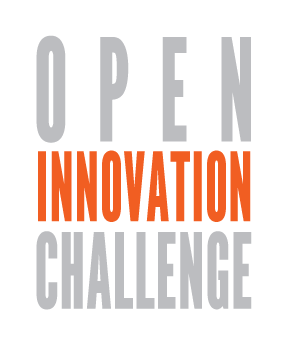 Here’s a story that ran recently on the TLT website to get you all excited about a great new feature of the TLT Symposium, the Open Innovation Challenge:
Here’s a story that ran recently on the TLT website to get you all excited about a great new feature of the TLT Symposium, the Open Innovation Challenge:
One of the goals of every TLT Symposium is to offer an opportunity for Penn State faculty and staff to share innovative, real-life examples of teaching with technology. This year, part of the Symposium will be the inaugural Open Innovation Challenge (OIC), which features great ideas for teaching and learning that have not yet happened.
Select innovators will get the chance to showcase their ideas in a set of fast-paced, five-minute presentations during a general session for the Symposium’s 500 attendees, who will get to vote on their favorite idea. The winning idea will nurtured by a team of experts to help make it come to fruition here at Penn State.
Ideas for the OIC can be submitted online and the deadline for submission is January 30. The Symposium itself is a free event and will be held March 21 at the Penn Stater Hotel and Conference Center. Those who want to experience the OIC presentations and the rest of the event (including a keynote presentation by Harvard education innovator Dr. Eric Mazur) can register at http://symposium.tlt.psu.edu/.
The OIC is definitely a forward-thinking project, and the only real criteria for ideas is they need to be about something that has not happened yet. The goal of the event, according to Hannah Williams, multimedia specialist with Teaching and Learning with Symposium (TLT) and coordinator of the OIC, is to tap the entire University collective mind for innovation.
The OIC can get people to think outside of their comfort zone to come up with ideas, according to Kyle Bowen, director of Education Technology Services. “Many times when people engage in these kinds of creative practices, the thinking is focused on things they know how to accomplish,” Bowen said. “So, as they submit their grants, or as they work with the people in their academic area, a lot of the focus is on things that are relatively safe. That’s because they understand a lot of the issues or what resources may be available.”
But, Bowen said, this level of comfort could end up being a constraint on innovation. Sometimes, he noted, an idea never is shared because the person with the idea does not know how to turn it into something viable. So, even if the idea has a chance of having a lot of value, it is never brought to light.
“A big part of the philosophy of the Open Innovation Challenge is to provide a venue for those ideas that you think can move institution forward but don’t know how to make happen,” Bowen said.
The winner gets access to a lot of valuable resources. “We can surround the winner and their idea with a team of people to explore it; to figure out if it is viable, asking questions like is this something we can put into action, and is this something that can be created?” Bowen said. “Maybe the outcome of these efforts is the actual technology, or the concept, or perhaps the outcome is a grant proposal or something else. The outcome can be different things based on the needs of the idea of itself.”
Along with the chance at the big prize, a key benefit for all participants in the OIC, Bowen noted, is the chance to present an idea in front of the 500 or so educational technology experts attending the TLT Symposium. “Not all ideas mean something to everyone,” he said. “But, the more people you share it with, the more likely that it’s going to resonate.”
Even if an OIC presenter does not win, Williams added, that does not mean their idea is dead in the water. “The OIC is a wonderful way to discover collaborators,” she said. “With 500 people at the Symposium, you likely will have people who face the same issues or have had a similar or same idea. Hopefully, the OIC will create some collaborations among our experts at Penn State that might not have happened otherwise.”
The OIC is a new feature for the TLT Symposium, and both Williams and Bowen see the OIC as part of the continuing evolution of the Symposium as an event. Instead of learning about what innovative approaches in education technology are already happening at Penn State, the OIC looks at what could happen at the University in the future. “The OIC takes a forward-thinking step and gets people looking beyond the current horizons of what we’ve already done,” Williams said. “Let’s really talk about the future, because people at Penn State can be leaders and do some amazing new things.”
Bowen said that another benefit of the OIC is offering another way to participate in the Symposium, one that is fairly simple to apply for. “The submission process is simpler than a submitting a session abstract,” he said. “You’re basically just sharing an idea, or even just a notion and the presentation itself is only 5 minutes long. So, it really creates this simple canvas on which our best staff and teachers can share their ideas.”
“These ideas can move the institution forward, help our students be more successful, and develop new forms of instructions and new methods of assessment that we can put into place to help improve the educational opportunities at Penn State,” Bowen added.


